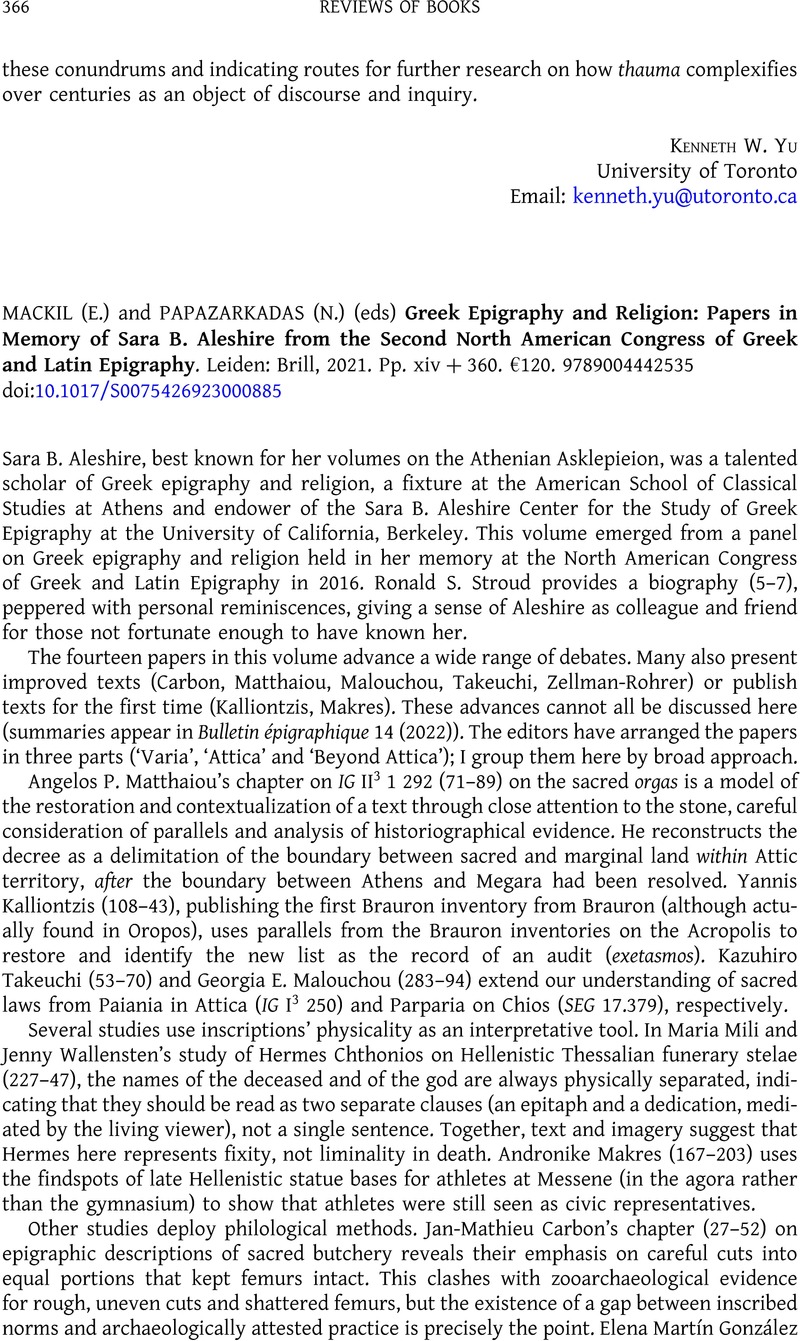No CrossRef data available.
Article contents
(E.) MACKIL and (N.) PAPAZARKADAS (eds) Greek Epigraphy and Religion: Papers in Memory of Sara B. Aleshire from the Second North American Congress of Greek and Latin Epigraphy. Leiden: Brill, 2021. Pp. xiv + 360. €120. 9789004442535
Review products
(E.) MACKIL and (N.) PAPAZARKADAS (eds) Greek Epigraphy and Religion: Papers in Memory of Sara B. Aleshire from the Second North American Congress of Greek and Latin Epigraphy. Leiden: Brill, 2021. Pp. xiv + 360. €120. 9789004442535
Part of:
History
Published online by Cambridge University Press: 06 November 2023
Abstract
An abstract is not available for this content so a preview has been provided. Please use the Get access link above for information on how to access this content.

- Type
- Reviews of Books: History
- Information
- Copyright
- © The Author(s), 2023. Published by Cambridge University Press on behalf of the Society for the Promotion of Hellenic Studies


